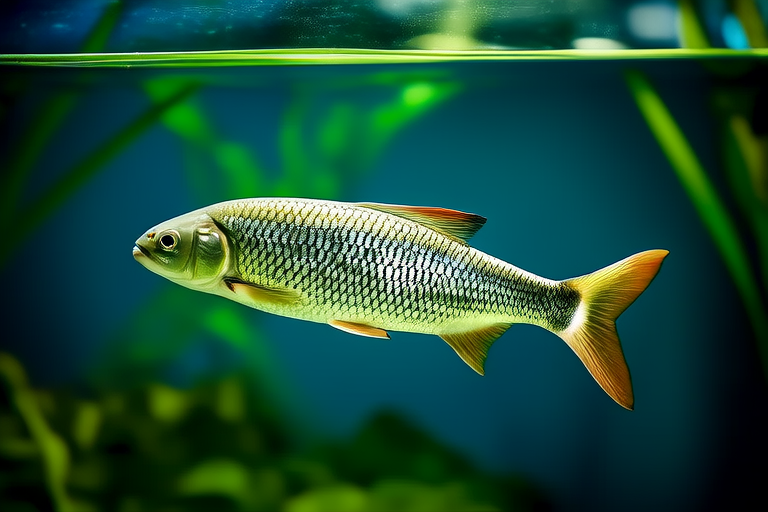Arowana Legends: Myths and Realities Behind These Aquatic Giants
The Arowana, often referred to as the dragon fish due to its majestic appearance, is one of the most fascinating creatures in the freshwater world. Known for their elongated bodies, large scales, and prominent mouths filled with sharp teeth, these aquatic giants are a sight to behold. Native to tropical regions of Africa, Asia, and South America, Arowanas are found in slow-moving rivers, swamps, and floodplains. Their shimmering scales and predatory nature have made them a subject of both admiration and myth in many cultures.
Physical Characteristics and Native Habitats
Physically, Arowanas are characterized by their long, slender bodies that can reach lengths of up to three feet or more. Their large, shiny scales offer protection against predators and aid in thermoregulation. The Arowana’s mouth, equipped with formidable teeth, is designed for catching prey mid-air, making them exceptional hunters. Their native habitats include the Amazon Basin, parts of Southeast Asia, and certain African rivers. These environments provide the necessary conditions for Arowanas to thrive, offering ample food sources and shelter.
Historical and Cultural Significance
The Arowana holds significant cultural importance in various regions. In China, it is considered a symbol of good fortune and prosperity, often featured in Feng Shui practices. This belief stems from the Arowana’s resemblance to a mythical Chinese dragon, a creature associated with strength and power. Similarly, in Malaysia and Indonesia, the Arowana is revered for its ability to bring wealth and protection to its owner. These myths have contributed to the popularity of Arowanas as ornamental fish, especially among those who believe in their mystical properties.
Analyzing the Myths: Fact vs Fiction
While the myths surrounding Arowanas are intriguing, it is essential to separate fact from fiction. The belief that owning an Arowana guarantees financial success is largely unfounded. However, the fish’s reputation as a powerful predator is well-deserved. Scientific studies have shown that Arowanas are highly efficient hunters, capable of leaping out of the water to catch insects and small birds. This behavior has earned them the nickname ‘jumping fish.’
From a biological perspective, Arowanas are known for their parental care. Males protect the eggs and young in their mouths until they are ready to fend for themselves. This behavior is unique among fish species and highlights the Arowana’s complex social structure. Conservation efforts are crucial for preserving these remarkable creatures, given the threats posed by habitat destruction and overfishing.
Scientific Insights: Behavior, Life Cycle, and Conservation
Understanding the life cycle of Arowanas provides valuable insights into their survival strategies. Female Arowanas lay eggs in nests built by males, who then guard the eggs and newly hatched fry. This parental care is vital for the survival of the offspring. As they grow, Arowanas become more independent, developing the skills necessary for hunting and avoiding predators.
The conservation status of Arowanas varies by species. Some, like the Asian Arowana, are listed as endangered due to overexploitation for the aquarium trade and habitat loss. Efforts are being made to protect these species through breeding programs and habitat restoration initiatives. By supporting these efforts, aquarists can contribute to the preservation of these magnificent fish.
Practical Advice for Aquarium Enthusiasts
For those interested in keeping Arowanas in home aquariums, several factors must be considered. First, it is important to ensure that the tank is large enough to accommodate the fish’s size and swimming habits. Arowanas require plenty of space to move around and hunt. Additionally, maintaining optimal water conditions is crucial for their health. Regular monitoring of water parameters such as pH, temperature, and oxygen levels is necessary to prevent stress-related diseases.
Ethical considerations are paramount when acquiring Arowanas. It is recommended to purchase fish from reputable breeders who prioritize sustainable practices. Avoiding wild-caught specimens helps reduce pressure on natural populations. Providing a stimulating environment with appropriate hiding spots and live food ensures the well-being of your Arowana. By adhering to these guidelines, aquarium enthusiasts can enjoy the beauty of these aquatic giants while promoting their conservation.
In conclusion, the Arowana is a captivating species with a rich history and cultural significance. While myths and legends have shaped perceptions of these fish, scientific knowledge offers a deeper understanding of their behaviors, life cycles, and conservation needs. For those interested in keeping Arowanas, responsible husbandry practices are essential for ensuring the health and happiness of these magnificent creatures. By combining cultural appreciation with scientific insight, we can continue to admire and protect these aquatic giants for generations to come.
